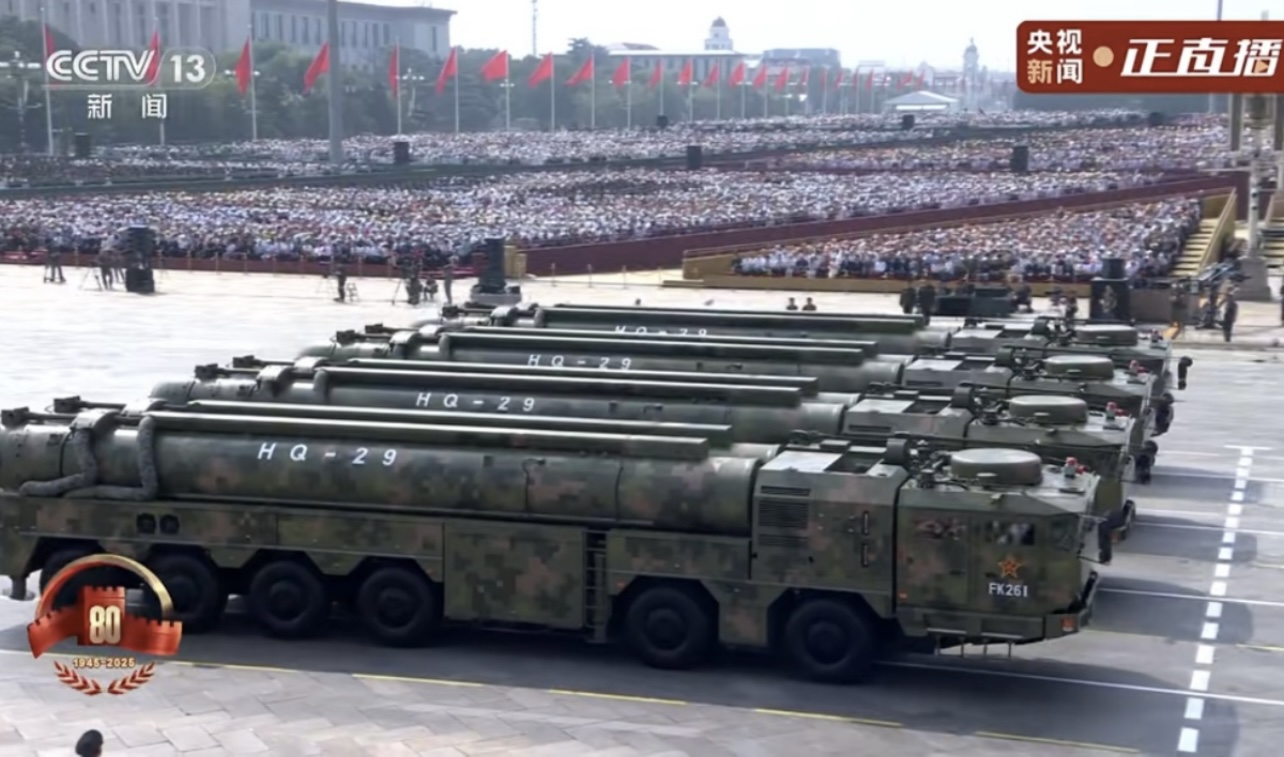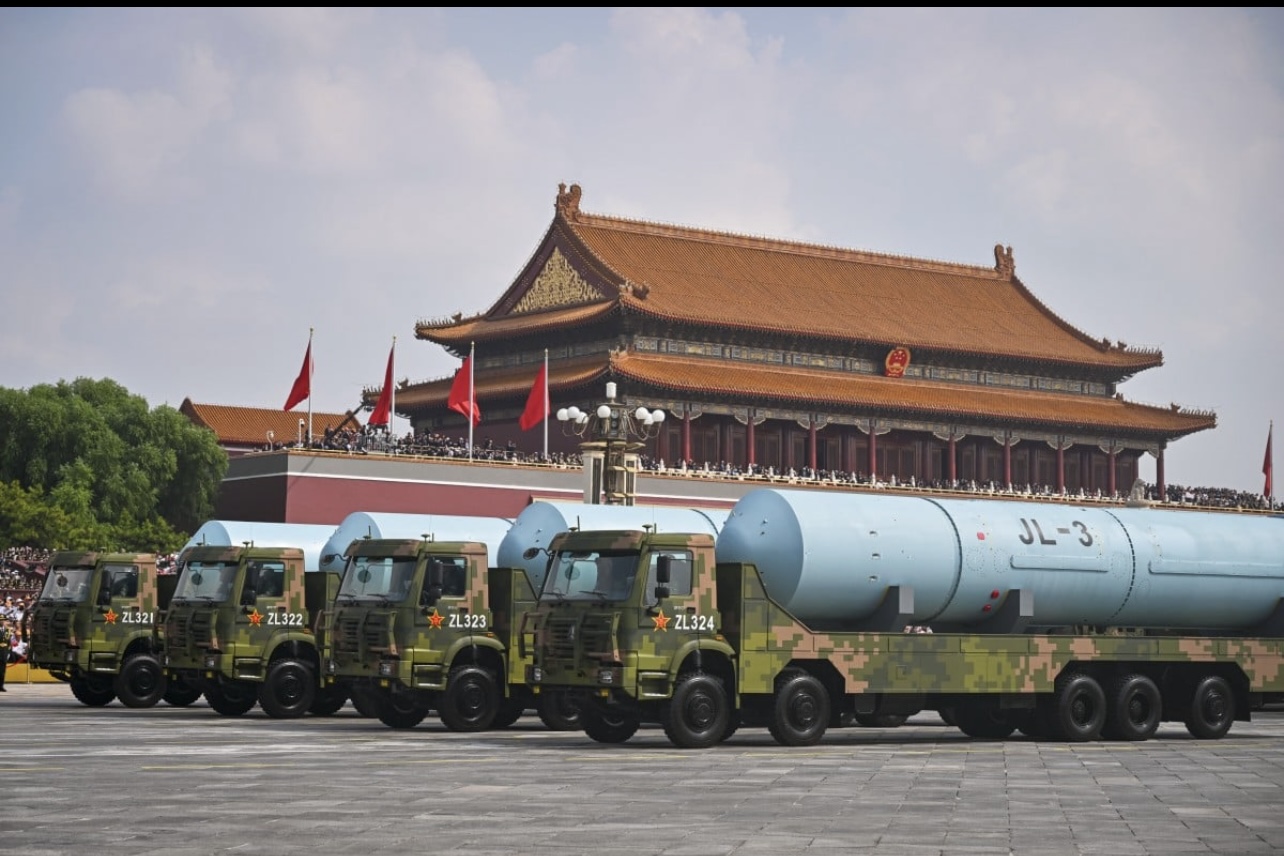China’s Victory Day military parade in Beijing a spectacle commemorating the 80th anniversary of World War II’s end was more than symbolic pageantry. It served as a vivid showcase of the country’s rapidly evolving military capabilities, carrying potent messages of deterrence and strategic ambition.
For the first time, China publicly unveiled its fully integrated nuclear triad: land-based intercontinental ballistic missiles (ICBMs) like the DF-61 and DF-31BJ; sea-based systems, notably the JL-3 submarine-launched ballistic missile; and air-delivered weapons including the Jinglei-1. The parade also featured the silo-based DF-5C, capable of carrying multiple warheads and reaching anywhere globally . Together, these deployments project a credible second-strike capability, reducing the window for enemies to neutralize China’s deterrent and thereby enhancing its strategic resiliency.
China also put on public display a series of hypersonic anti-ship missiles, such as the YJ-15, YJ-17, YJ-19, YJ-20, and the formidable YJ-21 “carrier killer.” Capable of Mach-level speeds and advanced maneuverability, these weapons are designed to penetrate dense naval defenses and strike high-value vessels like aircraft carriers from afar.
The debut of the LY-1 high-energy laser weapon atop a truck, along with other high-power microwave systems, showcased China’s growing prowess in non-kinetic warfare. These systems are aimed at disabling drones or targeting electronic systems—especially useful in the evolving battlefield where aerial drones are ubiquitous and cost-effective to counter.
Autonomous platforms featured prominently. Underwater drones like the 18–20 m AJX-002 and HSU-100 XLUUVs (extra-large unmanned underwater vehicles) hint at capabilities for stealth reconnaissance, sea denial, and mine-laying operations . Meanwhile, autonomous “robot wolves” four-legged robots mounted on vehicles suggest a shift toward intelligent ground-based systems for roles like surveillance or terrain navigation.
China highlighted its array of unmanned aerial systems, including stealth “loyal wingman” drones, drone helicopters, and aerial swarms designed to augment manned aircraft . Additionally, the HQ-29 space defense interceptor was displayed signaling China’s intent to challenge adversaries in space-based warfare by threatening satellites.

This parade wasn’t just about showcasing hardware it was a clear geopolitical statement. Displaying its full nuclear triad and hypersonic arsenal, alongside burgeoning AI and drone warfare capabilities, Beijing sought to underline its growing strategic autonomy and deterrent posture. Analysts suggest these developments are particularly aimed at countering U.S. power projection, especially in the Indo-Pacific and around flashpoints like Taiwan .
However, experts caution that showcasing doesn’t equate to proven battlefield readiness. Much of this equipment remains newly introduced publicly, with limited evidence of operational deployment or testing.
China’s parade conveyed a vivid message: its military transformation is multidimensional, spanning nuclear deterrents, hypersonic strike, directed-energy systems, and autonomous warfare. It’s a strategic narrative signaling to the world that Beijing seeks credible defense and deterrence, while projecting technological competence and strategic depth.



